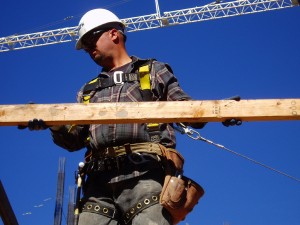 Print a Sign-In Sheet | Spanish Version
Print a Sign-In Sheet | Spanish Version
Many companies have been asked what factors influenced the implementation of their safety programs. Some answers included OSHA compliance, the company’s reputation, maintaining a low experience modification in order to help lower worker’s compensation costs, and secure jobs, employees’ well-being, and profitability.
The companies were then asked what they considered to be the most important elements of their safety programs and why those elements were effective in reducing fall injuries.
No matter what spurred the influence, safety programs should contain the following elements:
1. Support from upper management. Full support from upper management and having all employees understand that such support is there. An effective safety program requires companywide commitment, and employees need to realize the company is serious about safety.
2. Training of job foreman in supervisory skills. Many thought foremen and supervisors were often given their jobs because of their trade skills and not because of their ability to effectively supervise others. They felt training in management and supervisory skills produced positive results.
3. Regular jobsite training. It is important to retrain employees, and it reinforces the fact that safety is important to the company.
4. Daily jobsite meetings where supervisors cover job-specific safety issues. Again, this shows the company is serious about safety and it communicates job-specific hazards that need to be addressed.
An effective fall protection plan requires a companywide commitment. It needs to be important to management, and the employees need to realize the company is serious about safety.
KEMI does not assume liability for the content of information contained herein. Safety and health remain your responsibility. This information is to be used for informational purposes only and not intended to be exhaustive or a substitute for proper training, supervision, or manufacturers’ instructions/recommendations. KEMI, by publication of this information, does not assume liability for damage or injury arising from reliance upon it. Compliance with this information is not a guarantee or warranty that you will be in conformity with any laws or regulations nor does it ensure the absolute safety of any person, place, or object, including, but not limited to, you, your occupation, employees, customers, or place of business.

